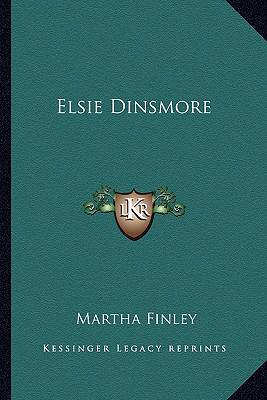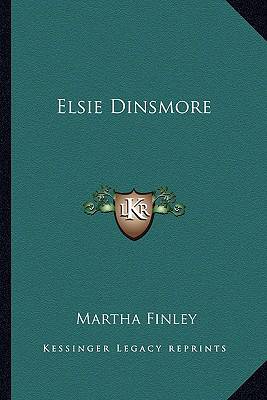
- Retrait gratuit dans votre magasin Club
- 7.000.000 titres dans notre catalogue
- Payer en toute sécurité
- Toujours un magasin près de chez vous
- Retrait gratuit dans votre magasin Club
- 7.000.0000 titres dans notre catalogue
- Payer en toute sécurité
- Toujours un magasin près de chez vous
Description
""Elsie Dinsmore"" is a novel written by Martha Finley, first published in 1867. The book tells the story of Elsie Dinsmore, a young girl who is the daughter of a wealthy Southern plantation owner. Elsie is a devout Christian who struggles to reconcile her faith with the actions of her father, who owns slaves and is often cruel to them. Throughout the novel, Elsie faces numerous challenges, including the death of her mother, her father's remarriage, and her own personal struggles with forgiveness and love. The book is a classic example of 19th-century sentimental literature, and is often cited as an important work in the development of children's literature in America. Despite its popularity, ""Elsie Dinsmore"" has also been criticized for its portrayal of slavery and its romanticization of the antebellum South.1868. The first of the popular Elsie Books written for young readers. The book begins: The schoolroom at Roselands was a very pleasant apartment; the ceiling, it is true, was somewhat lower than in the more modern portion of the building, for the wing in which it was situated dated back to the old-fashioned days prior to the Revolution, while the larger part of the mansion had not stood more than twenty or thirty years; but the effect was relieved by windows reaching from floor to ceiling, and opening on a verandah which overlooked a lovely flower-garden, beyond which were fields and woods and hills. The view from the verandah was very beautiful, and the room itself looked most inviting, with its neat matting, its windows draped with snow-white muslin, its comfortable chairs, and pretty rosewood desks.This scarce antiquarian book is a facsimile reprint of the old original and may contain some imperfections such as library marks and notations. Because we believe this work is culturally important, we have made it available as part of our commitment for protecting, preserving, and promoting the world's literature in affordable, high quality, modern editions, that are true to their original work.
Spécifications
Parties prenantes
- Auteur(s) :
- Editeur:
Contenu
- Nombre de pages :
- 344
- Langue:
- Anglais
Caractéristiques
- EAN:
- 9781162775388
- Date de parution :
- 10-09-10
- Format:
- Livre broché
- Format numérique:
- Trade paperback (VS)
- Dimensions :
- 152 mm x 229 mm
- Poids :
- 458 g

Les avis
Nous publions uniquement les avis qui respectent les conditions requises. Consultez nos conditions pour les avis.






